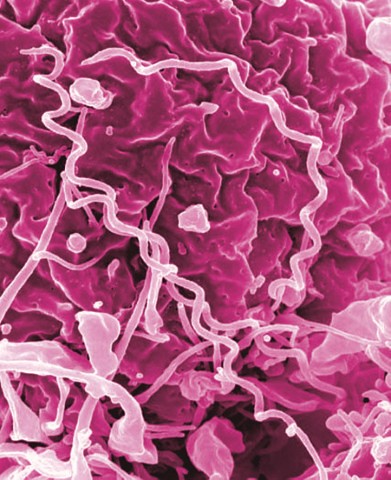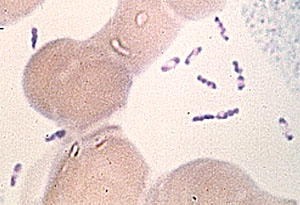Image courtesy of National Institute of Allergy and Infectious Diseases, National Institutes of Health
The recorded number of syphilis cases in the United States is the highest it’s been since the 1950s.1,2 In 2000, there were under 32,000 cases of syphilis in the U.S.3 This number skyrocketed to 207,000 cases, which is nearly 62 cases of syphilis per 100,000 people, in 2022.3 Syphilis is a preventable, treatable, and curable sexually transmitted infection (STI), and the surge in cases combined with the increase in antibiotic shortages in the U.S. pose a significant public health threat.
In June of 2023, Pfizer announced that there was a shortage of Bicillin–a common form of penicillin used to treat syphilis–due to rising syphilis cases and competitive shortages in the U.S.4 Bicillin is one of many antibiotics that are currently in short supply in the U.S. Many providers have been using Bicillin as an alternative treatment for other bacterial infections. For example, Bicillin has been heavily prescribed to treat strep throat during the on-going amoxicillin shortage.4 In response to the shortage, Pfizer recommended providers prescribe doxycycline, an alternative treatment that is less effective in treating syphilis in pregnant people.4 The shortage of Bicillin, among other antibiotic shortages, has forced providers to ration their Bicillin supplies and prioritize its use for vulnerable patients.
Syphilis is an STI caused by the bacterium Treponema pallidum.5 The STI is spread from person-to-person by direct contact with a syphilitic sore, referred to as a chancre, during vaginal, anal, and oral sex.5 Providers use treponemal tests–which are typically free or relatively inexpensive– to detect and diagnose syphilis infections.5,6 There are four stages of a syphilis infection–primary, secondary, latent, and tertiary stages.5 If an individual does not receive treatment in one stage, the infection will progress to the next. If left untreated, syphilis can cause heart and brain damage, blindness, deafness, and paralysis.2,5
According to the Department of Health and Human services, syphilis cases in the U.S. rose by 80% between 2018 and 2022.2,7 The syphilis crisis has become a significant public health issue for pregnant people and infants. The maternal rate for syphilis during pregnancy rose from 87 per 100,000 births in 2016 to 280 per 100,000 births in 2022.3 Without proper treatment, pregnant people can pass a syphilis infection to the fetus, referred to as congenital syphilis, which can lead to adverse pregnancy outcomes such as miscarriage, stillbirth, and premature birth.3 In 2022, there were approximately 3,755 recorded cases of infants born with syphilis in the U.S., an alarming 937% increase in cases in the last decade.3,8 Furthermore, racial and ethnic minorities are disproportionately affected due to socioeconomic and structural inequalities.8
The sudden rise of syphilis cases in the U.S. is multifactorial. Increases in substance abuse, decrease in condom use, ongoing social and economic inequalities, lack of investment in public health, stigma surrounding sex, and reduction in STI services at the state and local levels all contribute to the syphilis crisis.6,8 The shortage of Bicillin and other antibiotics are only a small part of the on-going drug shortage in the U.S. due to increasing costs and price ceilings.9 On an individual level, it is encouraged that sexually-active persons receive routine STI screenings. However, this may be challenging as funding for STI screening programs and health clinics continues to decline.1 If we wish to see a sharp decline in syphilis cases, urgent action is needed at the state, federal, and local levels to support affordable, life-saving STI treatments, ensure access to Becillin and other antibiotics, and develop effective public health interventions.
Resources
- Syphilis in the U.S was once nearly eradicated. Here’s why it’s surging again | PBS News Weekend
- 2022 U.S. Syphilis Cases Reach Highest Numbers Since the 1950s | NCHHSTP Newsroom | CDC
- The United States was on course to eliminate syphilis. Now it’s surging (sciencenews.org)
- Penicillin Shortage Explained: Increased Syphilis Rates And Amoxicillin Shortage Fueled Crisis (forbes.com)
- Detailed STD Facts – Syphilis (cdc.gov)
- Why Syphilis Is Rising in the U.S. and What Symptoms Are | TIME
- Unwanted record: Erie County reports its highest syphilis totals for third straight year (msn.com)
- Syphilis cases surge in the U.S., CDC says : NPR
- Antibiotic Shortage Could Fuel Rise in Syphilis Rates – The New York Times (nytimes.com)


